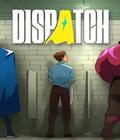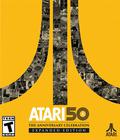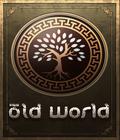Old World is the second game by Mohawk Games, which boasts the lead designer of Sid Meier's Civilization IV, Soren Johnson. Mohawk's first outing, Offworld Trading Company, was an economic game reminiscent of the very old board game Stock Ticker and was a very solid, albeit niche, title. Old World steps into a field with much more direct competition, not only with standard 4X games like Civilization and the Endless (or Humankind) series but also with Paradox's Crusader Kings. Can Old World stand up to the competition?
Unlike Offworld Trading Company, Old World is not published by Stardock. You won't find it in the Stardock Games Launcher, and currently, you won't even find it on Steam. Old World is one of several games these days with an exclusive launch on Epic Games, although Steam indicates it will be released there in the future. I'll leave it up to the player to decide whether that's a problem.
Old World begins much like other 4Xs in that players choose a nation/leader. There are currently seven available nation/leader starts. As the name implies, you won't find America or Britain here; it focuses on ancient world nations exclusively: Assyria, Egypt, Greece, Rome, etc. Each nation has its perks, but the differences don't seem to be major, so it's not an asymmetrical competition.
Once you select a leader, you get some standard features like map type, size, number of opponents, and difficulty. You get a few options to adjust the AI in different ways: aggressive or not, starting development, and an interesting "Play to Win," which causes AIs to prevent anyone from winning. Winning consists of either completing 10 ambitions, which semi-randomly pop up as defined goals in the current leader's lifetime, or through a points system for completing wonders, future techs, and other goals.
Starting off seems fairly standard in that you get a settler, and you begin to construct buildings and units. One interesting variation is the three families that you manage. You'll have to choose one of the four families for your civ, each offering different perks. Once three are chosen, the fourth is discarded. The family's opinion of you needs to be managed to some degree, but I never found that to be much of an issue.
The graphics seem to be serviceable, so they're not brilliant and not ugly; they functionally display terrain features and units. The characters portraits are quite well done — and there are many of them. They reflect the associated culture, and they believably age over time, so that's a nice touch.
That's right; characters age over time, including your leader. Fortunately, when you die, the game is not over, as long as you have an heir to the throne. We've now reached the major thrust of the gameplay in Old World. It seeks to combine strategy, map building, and city building (à la Civilization) with character management and occasional drama (à la Crusader Kings). Unfortunately, these two aspects fail to interact with each other in interesting ways, and neither aspect is as well implemented as the games they imitate.
The characters primarily boil down to a handful of stats, which improve various production values depending on where they are assigned. They also can have various perks like Tough or Extravagant, which mostly modify stats and/or production values. Much like the Endless series, there are many random events that involve characters, so this basically amounts to making a choice between two or three different stat blocks. Something happened to your daughter, you gain 300 gold, she gains +1 compassion, or she gains +1 wisdom. The characters' stories never felt meaningful.
The stats are everywhere in Old World: Attack Rating, Civic, Compassion, Courage, Critical Rating, Culture, Defense Rating, Discipline, Food, Gold, Growth, Iron, Orders, Science, Stone, Training, Unrest, Wisdom and Wood. In starting this game, you need to decipher a lot of symbols to figure out what's going on. Every tooltip seems to be an oversized block of stats. It's not a terribly interesting decision to calculate whether a character's stat block makes better sense as your chancellor or as a governor in one of your 10+ cities, and there are a lot of similar determinations that you need to make.
City management is also somewhat dull. You don't get super powerful cities like you do in other games. The major infrastructure is just a series of upgrades: Archive I, Archive II, Archive III, Forum I, Forum II, Forum III. There are more confusing stats, depending on what you are producing (e.g., civilians, military, or structures), and the city uses a different resource that is produced at a different rate.
Worker units make a major appearance in what I consider to be a chore. You send them around to improve city land, but by the end of the game, you can make about 20 terrain improvements. It's a pretty high mental tax to manage which tile to upgrade with what and do that several times per turn, and it's for something that's so unrewarding. Happily, around one-third of the way through the game, you get some tech that allows you to automate them, but that often results in an unbalanced economy, and I'd be shorted a key resource, such as stone or iron. Not only do you have to build an improvement on a tile, but then, oddly, you have to produce a specialist citizen (miner, poet, stonecutter, etc.) to work the tile.
Military action also falls a bit flat because there's not a lot of variety in units. Obviously, you won't see any airplanes or nuclear weapons. Units are given AoE features, like axmen being able to cleave adjacent units. Given the scale of the map, it seems strange to cleave units that are a tile away. Old World also takes any problems you may have had with one-unit-per-tile systems and amplifies them. You generally have more military units than comparable games, and the units move a lot further per turn. The sheer number of units can quickly clog up areas, and the rate of movement seems to greatly favor the aggressor. You could declare war and then move 10 or more units on an opponent's city in the same turn. On top of that, attackers seem to suffer very little damage when they attack. It's a very punishing system if you are caught unprepared because groups of units can zerg down incoming reinforcements and sustain virtually zero damage.
Finally, the nail in the coffin is the abysmal performance. I have no problems with any other 4X games, but around turn 80-100 out of a possible 200-turn game, everything becomes unbearably slow. On a normal map with normal AI, their turns took 90 seconds around turn 150. Every UI element lags, every button click feels slow, and in a game like this, that can add hours to the experience.
Old World has its moments, but it's a very niche offering. I wouldn't recommend it to someone who isn't hardcore about 4X games because the learning curve is brutal. However, if you've played the rest and you're looking for something new, and especially if the overload of stats is something you find compelling, check out Old World. At the very least, you get to enjoy Christopher Tin's majestic soundtrack.
Score: 6.8/10
More articles about Old World











 Old World (previously known as 10 Crowns) is an epic-scale turn-based strategy game that lets players create the greatest dynasty in world history.
Old World (previously known as 10 Crowns) is an epic-scale turn-based strategy game that lets players create the greatest dynasty in world history.




























